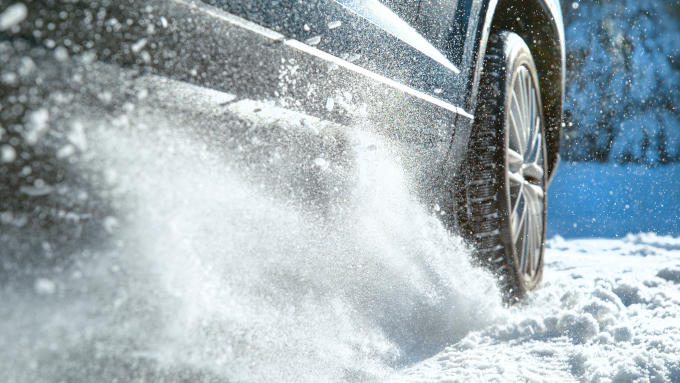Spring is in full swing and summer is around the corner. Routinely preparing your car after a long winter can be a great way to maintain both its safety and longevity. For the warmer months ahead, here are 7 easy steps to get your vehicle ready to beat the heat.
1. Check the A/C System
Make sure your vehicle’s air conditioner works before temperatures rise. Having a functioning A/C makes your ride more pleasant by cooling and dehumidifying the car’s cabin. Discomfort while driving can cause distraction and irritation, which can quickly become safety issues. If you notice any strange smells coming from the vents or the air is not cooling properly, a mechanic can help diagnose the problem.
Also, make sure your cabin air filters are checked and, if necessary, replaced by a mechanic. These filters trap all sorts of debris, such as pollen, dirt, exhaust fumes, and germs before they can reach your dashboard vents. Breathing polluted air from bad filters can cause all sorts of concerns for passengers, such as headaches, allergic reactions, and breathing issues, not to mention unpleasant, musty odors.
2. Give It a Good Wash
Washing your vehicle is the first and easiest step for springtime maintenance. While you or your kids may wash your car at other times during the year, make this the one time you have it professionally done. Here’s why: Spring is the time to wash both your vehicle’s exterior and undercarriage as these are the areas typical of salt and winter element accumulation. By getting it thoroughly washed, you can help to avoid rust and other build-ups that can damage your vehicle’s functions.
You may also consider taking it one step further and washing the interior of your vehicle. Just as snow, salt, water, and other elements impact the exterior of your vehicle, they also saturate the interior of your vehicle as they get tracked in. Doing a deep clean once or twice a year can help extend the lifetime of your vehicle.
3. Inspect, Rotate, Properly Inflate and Align Your Tires
Winter is easily the hardest season on your vehicle’s tires. The first step is to inspect your tires for the purpose of safety. If you are using winter tires on your vehicle, be sure to remove and replace them with all-season tires. You also want to make sure that none of your tires are bald — meaning that they don’t have any treads. The part of the tire that makes contact with the road is called the treads, and these wear down with use. When they are completely worn down, they’re referred to as “bald,” which increases your chances of spinning out or losing control of the vehicle.
Fortunately, there are a few ways to remedy this. One way is by rotating your tires to ensure that the tires wear evenly. If you have a front-wheel-drive vehicle, failing to rotate your tires will result in your front tires having significantly less tread than your back tires. Because you have to replace any bald tires, rotating your tires on-time can improve safety and avoid costly repairs.
Maintaining proper tire pressure is another critical safety consideration. Outside air temperature affects tire pressure: For every 10-degree fluctuation in air temperature, vehicle tire pressure will adjust by about 1 psi. Cold snaps in weather can lead to low tire pressure, or underinflation, which can create multiple potential dangers, such as poor traction and braking — especially during wet conditions common in spring. Most cars have a tire pressure monitoring system, so if you see your tire pressure warning light flick on, don’t ignore it. Likewise, if there is a significant increase in outside temperature, your tires could become overinflated. This can cause similar problems in the performance of your tires, especially premature wear. Check your owner’s manual to learn the optimum tire pressure for your car and get in the habit of routinely checking it from one season to the next.
The last action you may take for the maintenance and safety of your tires is alignment. Taking action on this now may save you from repairs down the road. Signs you may have a bad alignment are:
- noisy steering
- pulling to the left or right
- squealing tires
- uneven or rapid tire wear
4. Check your battery
Batteries work harder during the winter because of the weather. As a result, your battery can quickly drain. Get your battery checked at an auto parts store or repair shop (you may even get a free battery inspection to boot). Your battery life may also be low if its installation was more than four years ago. Getting it replaced now can save you time and hassle down the road.
5. Inspect Your Windshield Wipers
The average life of windshield wipers is 6 months to 1 year. Checking yours to make sure they’re working should be a normal part of your seasonal routine. Properly working wipers help improve visibility during poor weather and can reduce the risk of an accident, so make sure you never drive with failing ones.
6. Refresh Your Fluids
On the topic of windshield wipers, you should never drive without windshield wiper fluid. Winter is a prime time for you to use it all up because there’s constant grime on your windshield from different weather-related events.
You’ll also want to check your engine oil and brake fluid. Engine oil helps to protect your car from wearing down, and it allows it to function correctly. Brake fluid helps to transfer the pressure from your foot when it's on the pedal to the wheel. When the brakes have insufficient fluid, it will take more time and effort to stop your car. Ensuring that there’s always enough fluid is crucial for the proper functioning and safety of your vehicle.
7. Look Under the Hood
Have a trusted mechanic take a peek under your hood to make sure your belts, hoses, and air filters are in good shape. If the belts or hoses are cracked or damaged, get them repaired immediately.
Final Thoughts
When springtime rolls around, it’s time to start preparing your car for the next few months ahead. Doing this now can avoid costly repairs in the future. When in doubt, always turn to a professional who can get the job done correctly!
Let Us Help You!
Make your springtime to-do list a cinch by scheduling an appointment with us today. We’ll make sure your car is at its best this season.










